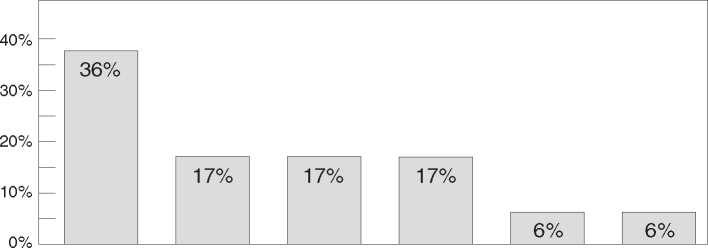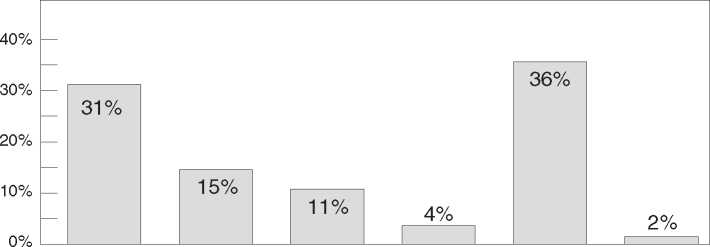In the 1860s, the African slave trade ended, bringing to a close three-and-a-half centuries of forced migrations of nearly 10 million Africans across the Atlantic. The predominantly southern destinations of African slaves, in contrast to the more northern destination of Europeans in the New World, was in part due to natural resistance to diseases. As Coelho and McGuire (2011) show, African ancestral biological heritage made them susceptible to northern “cold-weather” diseases, but more immune than Europeans to warm climate diseases, especially hookworm and malaria. In addition, their dominant economic activity, overwhelmingly, was sugar production. As Figure 13.1 on page 223 shows, most of the slaves were destined for Brazil (36 percent) and the Caribbean islands (40 percent)—areas economically based on sugar production. The United States received only 6 percent of the total numbers crossing the Atlantic. By 1825, the distribution of slaves was noticeably different from the pattern of arrivals. As revealed in Figure 13.2 on page 223, in 1825 the United States was the leading slave nation, housing 36 percent of all slaves in the Western Hemisphere. Differences in natural rates of population growth, negative in Brazil and in the Caribbean for long periods and positive and high in the United States, account for this significant demographic adjustment. Although having only a peripheral role in the Atlantic slave trade, the United States ultimately became the bulwark of resistance to the abolition of slavery in the Western world. This resistance was almost entirely in the southern United States.
In one sense at least, it is astonishing how quickly slavery collapsed in the Americas. For thousands of years, statesmen, philosophers, theologians, and writers had accepted uncritically the legitimacy and utility of slavery as a “time-honored” form of economic and social organization. Popes and queens and commoners alike accepted it. Early voices
FIGURE 13.1 The
Distribution of Slaves Brought into the New World, 1500-1870

Brazil
British French Spanish
Caribbean Caribbean America
United Dutch,
States Danish, and Swedish Caribbean
Source: Fogd and Engerman 1974, 14. © 1974 by Robert W. Fogel and Stanley L. Engerman. Used by permission ofW. W. Norton & Company, Inc.
FIGURE 13.2 The
Distribution of Slaves in the Western Hemisphere, 1825

Brazil
British
Caribbean
Spanish
America
French
Caribbean
United
States
Dutch, Danish, and Swedish Caribbean
Source: Fogel and Engerman 1974, 28. © 1974 by Robert W. Fogel and Stanley L. Engerman. Used by permission ofW. W. Norton & Company, Inc.
Against it, such as the Germantown Quakers (Society of Friends), who in 1688 condemned it as a violation of the Golden Rule, were ridiculed. No actions compelling conformity to abolitionist arguments were taken until 1758, when the Quakers in Philadelphia condemned both the slave trade and the owning of slaves. Members in violation were to be excluded from positions of responsibility in the Society of Friends.
Across the Atlantic, the English Society of Friends voted in 1774 to expel any member engaging in the slave trade. As shown in Table 13.1, a year later slavery was abolished in Madeira; the abolition fever strengthened and spread until Brazil, the last American bastion of slavery, abolished it in 1888.




 World History
World History









